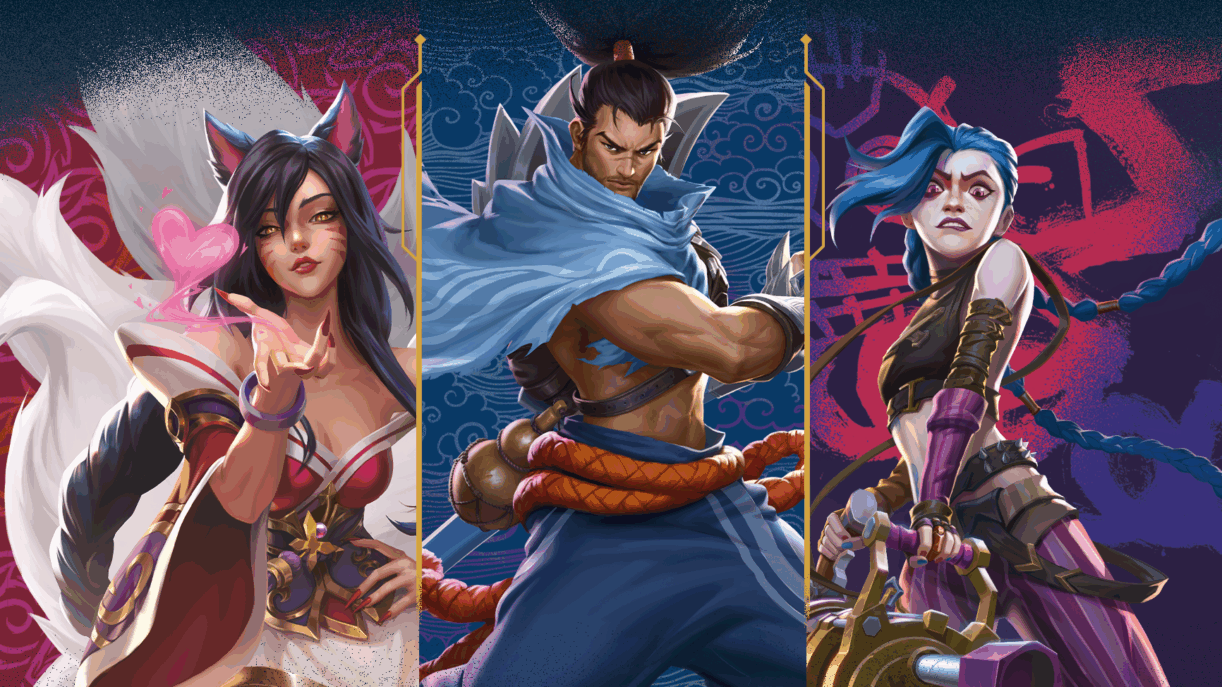Riftbound: A Captivating League of Legends Trading Card Game
Introduction: A New Chapter for League of Legends Fans
League of Legends continues to dominate the gaming world, expanding its reach through various media, from its acclaimed MOBA gameplay to the animated series Arcane and the virtual K-pop group K/DA. Now, Riot Games is venturing into the realm of physical tabletop gaming with the highly anticipated League of Legends Trading Card Game, Riftbound. Having the opportunity to examine the cards and learn about the game mechanics, I was genuinely impressed by how skillfully the developers translated the MOBA experience into a competitive card game format.
Insights from the Creators
During a conversation with Riftbound’s Game Director, Dave Guskin, I gained valuable insights into the game’s origins and future plans. The initial release features four trial decks centered around champions Jinx, Viktor, Volibear, and Yasuo. These decks serve as a showcase of the game’s core mechanics, which are designed to be accessible for both newcomers and seasoned trading card game (TCG) players. The game’s design philosophy is to build upon familiar systems, borrowing elements from successful titles like Hearthstone and One Piece Card Game, while emphasizing approachability and strategic depth rooted in League of Legends lore.
Core Components and Gameplay Mechanics
Card Types and Deck Building
Riftbound features the classic TCG card types, adapted to fit the League of Legends universe. The main card types include:
- Legend Cards: These dictate the deck’s champion and overall playstyle. For instance, Jinx’s Legend deck must include cards of red and purple, influencing both strategy and color synergy.
- Units: Creatures or champions that battle for control of the game’s zones.
- Spell Cards: Used for removal, support, or special effects.
- Gear Cards: Artifacts or items that remain in play to bolster units.
- Rune Cards: The resource system, similar to mana, that fuels actions and plays.
- Battlefield Cards: Unique locations on the board that players can conquer, earning points and gaining strategic advantages. Each battlefield has distinct effects, adding a layer of tactical complexity.
Comparison with Other Card Games
Gameplay shares similarities with titles like Hearthstone and the One Piece Card Game, especially in how leaders or champions provide passive or activated abilities. Unlike traditional leaders, Riftbound’s Legends support the player from the sidelines, offering ongoing benefits. For example, Viktor’s Legend can deploy a recruit token by spending one rune and tapping out, allowing strategic flexibility. Additionally, players can include a champion unit of the same name as their Legend in their deck, which is guaranteed to draw at the right time, ensuring reliable access to key characters.
Gameplay Experience and Strategy
The game begins with a starting hand of four cards, and each turn, players draw one card, a system that balances resource management without overwhelming the player. The resource system allows for up to 12 runes, providing ample room for diverse plays. Recycling cards back into the deck is a key mechanic, enabling resource efficiency and strategic planning. Gear cards can help reduce the costs associated with recycling, speeding up gameplay and increasing tactical options.
Combat and Scoring
The most engaging aspect of Riftbound is its battlefield mechanic. Players compete over three locations, which function similarly to lanes in the MOBA. Conquering a battlefield scores points—one for gaining control and an additional point for holding it until the next turn. The combat system is straightforward: units’ Might values determine the outcome. When units clash, their total Might is summed, and all involved units are destroyed if the attacker’s total equals or exceeds the defenders’. This simplified approach streamlines combat calculations, making gameplay faster and more intuitive.
Positioning and Ganking
Positioning plays a crucial role, especially with the game’s unique ganking mechanic—mirroring the MOBA tactic of surprise attacks. Units can only move between the base and battlefields, and only units with the ganking ability can move between battlefields. Proper timing and positioning are vital, adding a layer of strategic depth that reflects the dynamics of League of Legends matches.
Deck Building and Factions
Creating a deck tailored to your preferred playstyle is a significant part of Riftbound’s appeal. The game offers six color-based domains, each representing distinct strategies:
- Red (Fury): Aggressive, damage-focused, with cheap units and quick attacks.
- Green (Calm): Focuses on buffs and counterspells.
- Blue (Mind): Emphasizes control and card draw capabilities.
- Orange (Body): Prioritizes large units and mana ramping.
- Purple (Chaos): Specializes in bouncing enemies and movement abilities.
- Yellow (Order): Concentrates on token generation and wide board presence.
Among these, purple stands out due to its emphasis on movement, which is a crucial strategic element in Riftbound, allowing for dynamic positioning and surprise attacks.
Community and Competitive Outlook
Matches tend to be quick, often wrapping up in less than 25 minutes, making Riftbound suitable for casual play and tournaments alike. Initial plans suggest a flexible format, with local stores determining whether to run single or best-of-three matches. Riot Games aims to support larger competitive events, potentially adopting a best-of-three format for regional and global tournaments. The game will first launch in China this summer, followed by a worldwide release later in October. While staggered launches are common, Riot has expressed their intention to synchronize releases globally eventually, ensuring a fair competitive landscape.
Final Thoughts
Coming into Riftbound with a moderate knowledge of League of Legends, I was pleasantly surprised by how much I enjoyed the gameplay. The mechanics are accessible yet deep enough for strategic thinkers, and the thematic connection to the MOBA universe enhances the experience. With Riot’s strong pedigree and solid foundation, Riftbound has the potential to become a beloved addition to the TCG community. I look forward to seeing how the game evolves and what strategies players will develop as they dive into the Rift.

